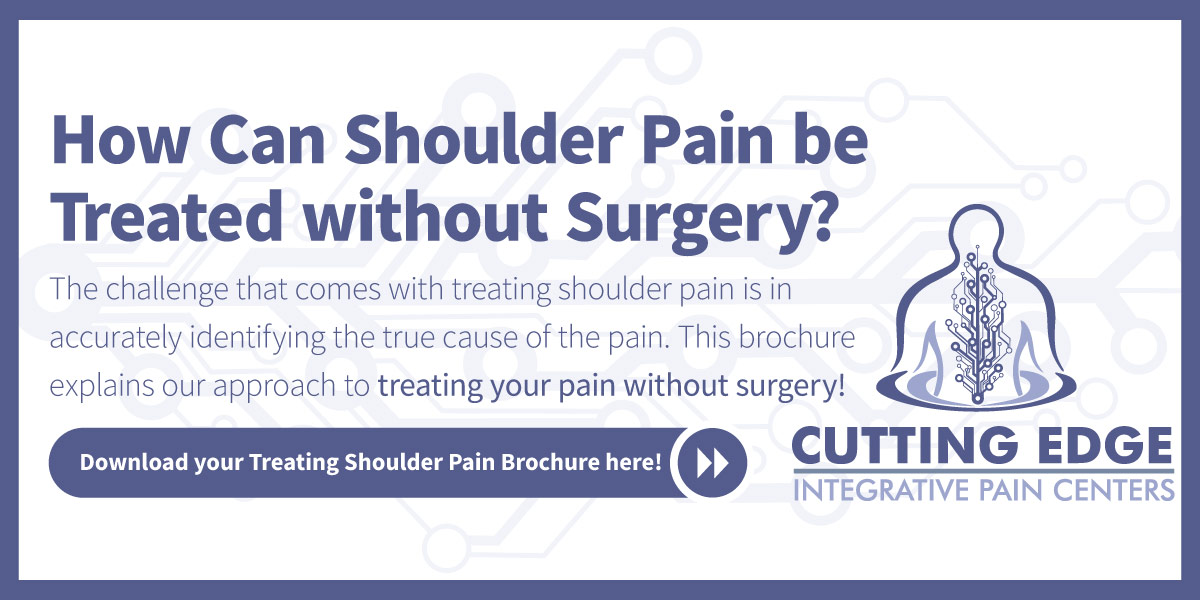What is referred to commonly as the rotator cuff is actually a group of muscles and tendons that help to stabilize your shoulder and facilitate movement. Sometimes the tendons in the rotator cuff become inflamed or torn, and this can lead to a number of symptoms including severe pain, weakness, and limited range of motion.
Want to Treat Your Wrist Pain Without Surgery?
Find Out How Here!
Rotator cuff injuries are common and can be especially prevalent in older adults over 40. While it’s common for a tear to occur because of injury or trauma, many rotator cuff tears occur happen for degenerative reasons. It’s been known for some time now that the rotator cuff doesn’t always have the best blood supply. As we get older, the blood supply in our rotator cuff tendons lessens. Without a good blood supply, the body’s natural ability to heal damaged tissue is impaired, and at some point with little provocation, unhealthy tissue fails and a tear occurs.
Regardless of how a rotator cuff tear occurs, there are things to consider before committing to surgery to repair it. That’s because a rotator cuff surgery involves cutting into the shoulder and stitching the rotator cuff tear back together. Unfortunately, many surgical patients never recover full range of motion and some patients even report persistent pain following surgery. This is disturbing, considering the primary purpose of undergoing the surgery is to end shoulder pain.

When suffering from shoulder pain, physical therapy is a viable, even preferred, alternative to surgery.
That is why nonsurgical treatment should be considered for many situations involving a rotator cuff injury. In fact, most rotator cuff injuries can be treated non-surgically to successfully relieve pain and improve function in the shoulder. One recent study found that “The prevalence of full-thickness rotator cuff tears increases with age [and] many patients are asymptomatic and may not require surgical repair.” Even when there is pain present, researchers concluded that in many cases physical therapy, rather than rotator cuff surgery, should be sufficient to address the shoulder.
There are many disadvantages to surgery including the risk of infection, permanent stiffness, lengthy and painful recovery, and complications associated with anesthesia. Before committing to rotator cuff surgery, be sure you explore all of the options that are now available.


